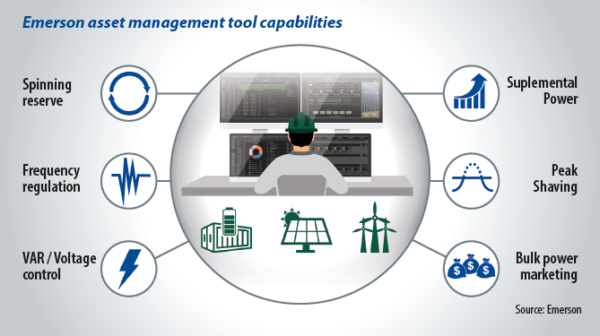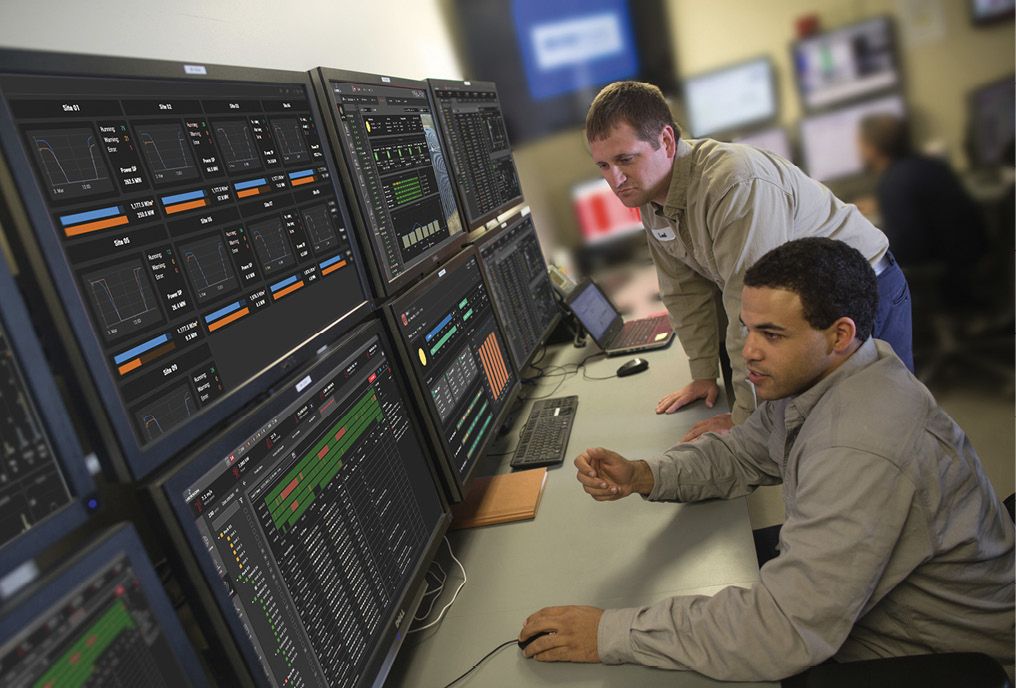The solar industry is growing at all stages along the supply chain. One of the key challenges of efficient production during an era of rapid growth is ever-increasing complexity. Renewables asset operators’ jobs become more complex as teams are required to manage a variety of disparate facilities, which use a wide array of software and interfaces.
Simultaneously, interaction with the grid and maintaining stability becomes more complex as providers must find ways to ensure the reliable operation of numerous assets – sometimes separated by great distances – with limited data at their disposal.
Moreover, regulation becomes stricter with each passing year, evidenced by recent changes in the United States such as the upcoming mandatory requirement for reporting of generation performance data to North American Electric Reliability Corp. (NERC) through the Generating Availability-Data System (GADS), starting in January.

Fortunately, asset monitoring software designed specifically for the renewable energy industry makes it easier for producers to aggregate, monitor, and manage their assets so they can drive significant improvements in performance and reliability. The best of these solutions can unify all assets into a single system, provide improved access to data, and help producers improve management of their operations across the life cycle of a single asset or an entire fleet.
Disparate systems
Renewable power generators have the option to buy PV equipment from a wide array of providers. Each component from a different supplier will come with its own original equipment manufacturer (OEM) control system and asset management application, with each delivering unique features and limitations. If an organization later decides to purchase a different brand, to extend software to comply with new grid requirements, or to build in a battery solution as part of a replacement or expansion project, all the new assets will have their own OEM software and maintenance teams will see an increase in complexity.
Control and asset management systems from a variety of manufacturers will typically use entirely different interfaces and dashboards. Operators will need to either switch among multiple applications to manage their assets, or they must find a way to create a complex interface that will connect two or more diverse equipment brands into one display.
The complexity continues to expand when companies build out their renewable energy portfolios, adding other sources of power. Operators and technicians will need to be trained on several interfaces and they will have to move between each and interpret data presented in different formats.
Comprehensive asset and energy management software can help teams circumvent such complexity issues by integrating many different types of systems across a fleet. The most advanced solutions are vendor independent, with the ability to manage assets from any manufacturer.
With an asset management platform designed specifically for renewable power production, teams can more easily combine multiple fleets of assets so they can be monitored from a single central surveillance or remote operation control center. These systems can also be operated alongside batteries and other assets, using a single dashboard. Built-in NERC GADS reporting can also be integrated into asset management software.
Stranded data
One of the key drawbacks of the software that ships with most solar components is that it is extremely limited by design. Most manufacturers are protective of the data their products deliver and, as a result, they limit user access to many data sources. For operations teams to effectively support their grids and maximize production, however, staff need access to far more information than is available via most OEM-supplied tools.
For example, operations and maintenance teams may want to access temperature readings from installed modules. If they are also using battery storage, they will want additional access to temperature data for those assets as well but, with standard OEM management tools, essential data is often siloed and unavailable.
Missing these and other critical data means not having full visibility of operations, with resulting decreases in reliability and uptime. When a team cannot see the data used to illustrate how its assets are operating, it is likely to miss problems that require a wider spectrum of data for identification. Such teams will also not be able to track and trend patterns so they can isolate and identify recurring issues.
A comprehensive renewable energy-specific asset management platform can easily provide 10 times to 50 times the parameters available from typical OEM software, and these parameters are critical for monitoring fluctuations in a system. Whether for supporting the grid to manage active power, reactive power, and frequency control – or improving reserves to ensure customers do not experience blackouts – operators need access to deep and reliable data.
Taking back control
Asset monitoring technology for renewables should be operational out of the box and capable of being maintained independently by a facility’s own staff. This should reduce the on-site engineering required with any new assets, each of which will be visible in preconfigured dashboards once connected.
Users should also be able to customize systems, if desired, adding new graphs and creating dashboard elements to highlight key information and make comparisons. For example, if an organization with three solar plants has one facility with sensor problems, it can compare that site’s operation against properly functioning plants to identify the trigger for those issues.
In addition, key alarms can be added to a custom dashboard designed to help sites meet specific goals. Some plants eliminate unused dashboards, replacing them with tools displaying critical information, such as emergency call numbers.
Trending asset performance can also enable technical teams to more easily intervene when assets are trending toward failure, and to make changes to optimize operations across a facility. Teams can better schedule maintenance and changes, ultimately lowering lifetime maintenance costs and driving higher earnings from production across a system's lifecycle.
 About the author: Thomas Andersen has more than 30 years' renewables control and optimization experience. He began his career as an electrical technician with Mita-Teknik, a wind generation control pioneer. Andersen is now Emerson’s VP of renewable energy technologies and leads expansion into renewables with innovative software and technology to increase reliability and energy production while reducing operation and maintenance costs. His extensive experience helps customers accelerate their digital transformation to smarter, more sustainable operations.
About the author: Thomas Andersen has more than 30 years' renewables control and optimization experience. He began his career as an electrical technician with Mita-Teknik, a wind generation control pioneer. Andersen is now Emerson’s VP of renewable energy technologies and leads expansion into renewables with innovative software and technology to increase reliability and energy production while reducing operation and maintenance costs. His extensive experience helps customers accelerate their digital transformation to smarter, more sustainable operations.
The views and opinions expressed in this article are the author’s own, and do not necessarily reflect those held by pv magazine.
This content is protected by copyright and may not be reused. If you want to cooperate with us and would like to reuse some of our content, please contact: editors@pv-magazine.com.



By submitting this form you agree to pv magazine using your data for the purposes of publishing your comment.
Your personal data will only be disclosed or otherwise transmitted to third parties for the purposes of spam filtering or if this is necessary for technical maintenance of the website. Any other transfer to third parties will not take place unless this is justified on the basis of applicable data protection regulations or if pv magazine is legally obliged to do so.
You may revoke this consent at any time with effect for the future, in which case your personal data will be deleted immediately. Otherwise, your data will be deleted if pv magazine has processed your request or the purpose of data storage is fulfilled.
Further information on data privacy can be found in our Data Protection Policy.